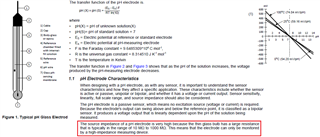Other Parts Discussed in Thread: LMC6062, OPA391
Hello,
I am designing isolated loop powered pH measurement circuit, as I read through LMP7721 datasheet, its excellent bias current makes perfect for pH measurement.
However, LMP7721 has supply current 1.1-1.5 mA at Vs=2.5V
This current is higher side considering other components in the loop, can you suggest alternative amplifier suitable for my application (have very low Iq)
I am referring "AN-1852 Designing With pH Electrodes" document, I have found LMC6062 as an alternative, can it works same as the circuit designed in AN-1852 ?


